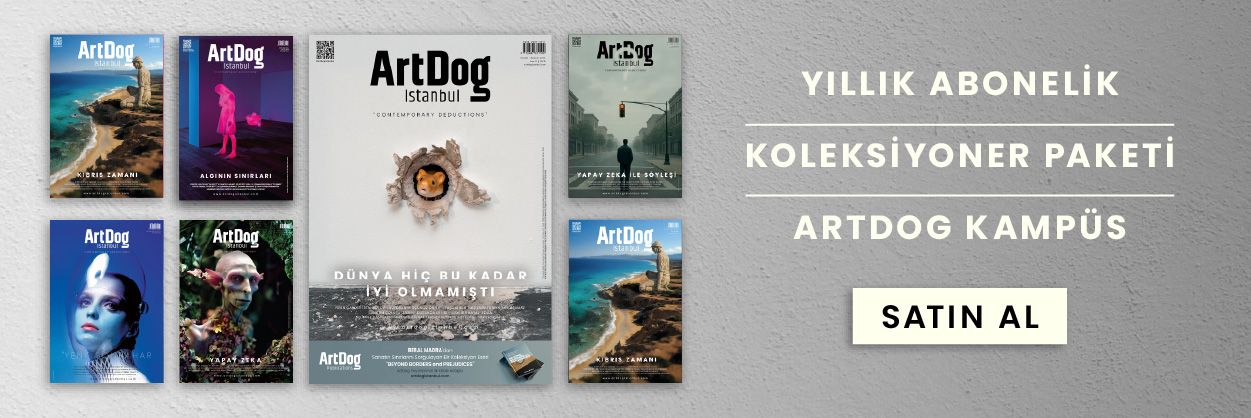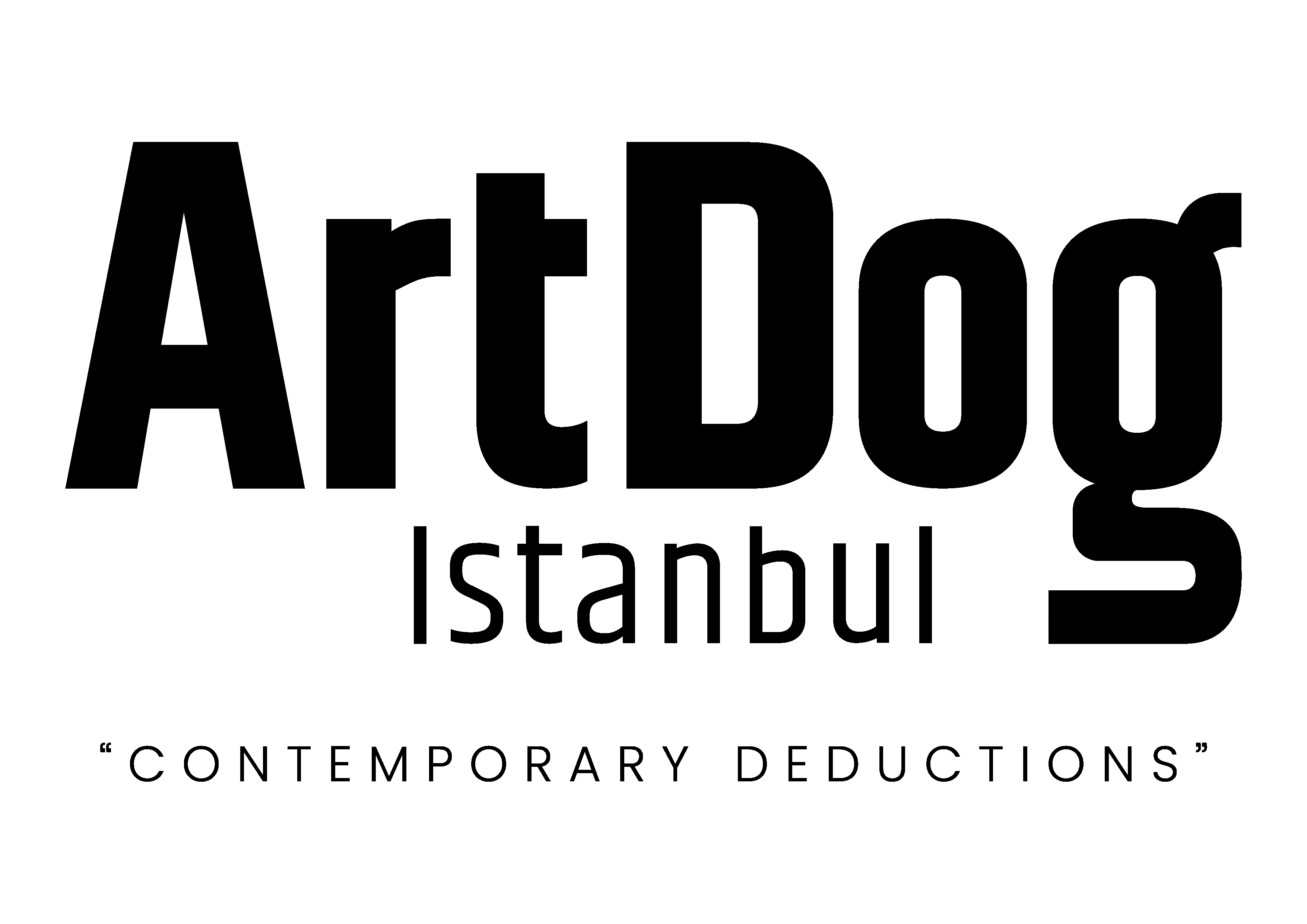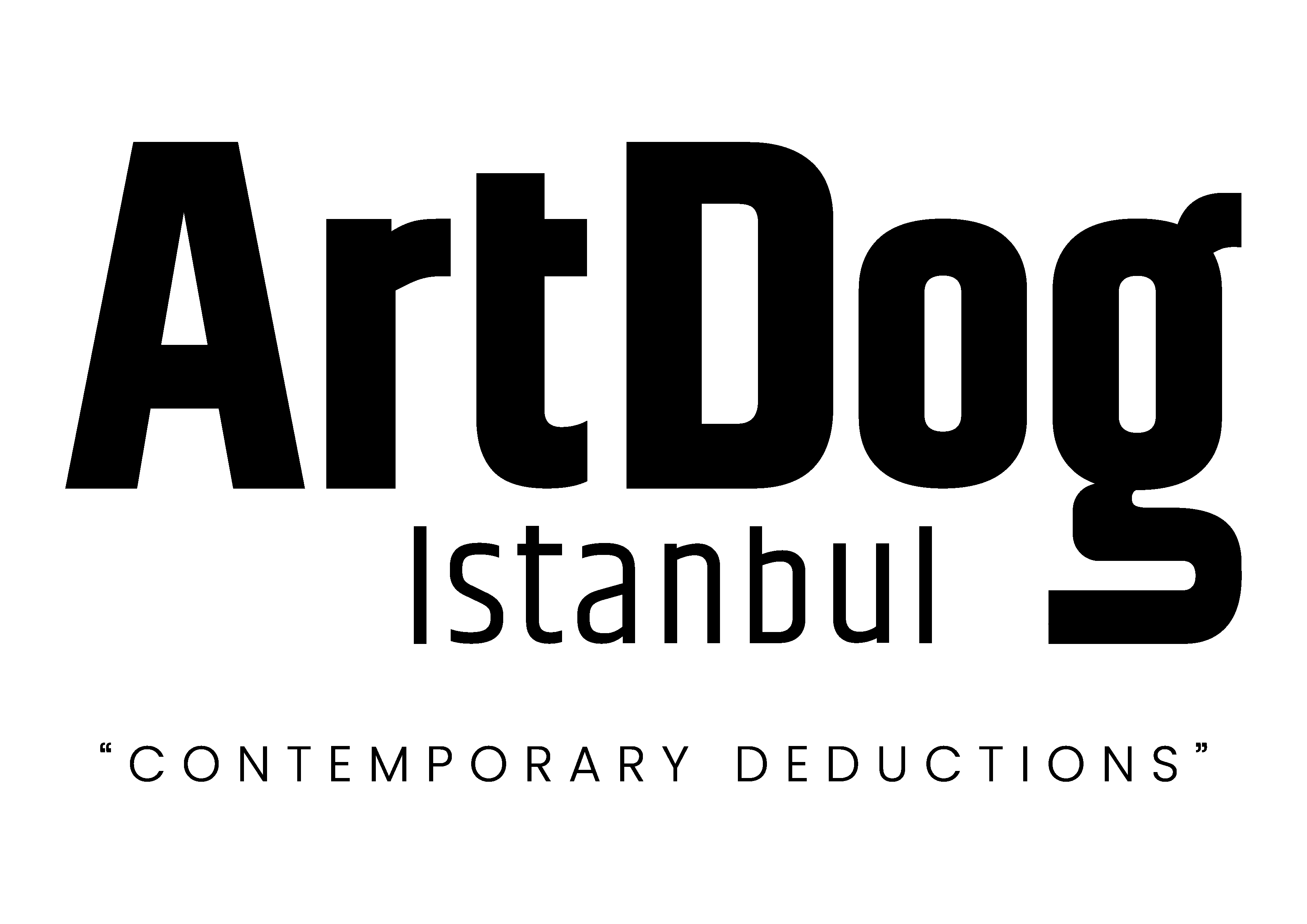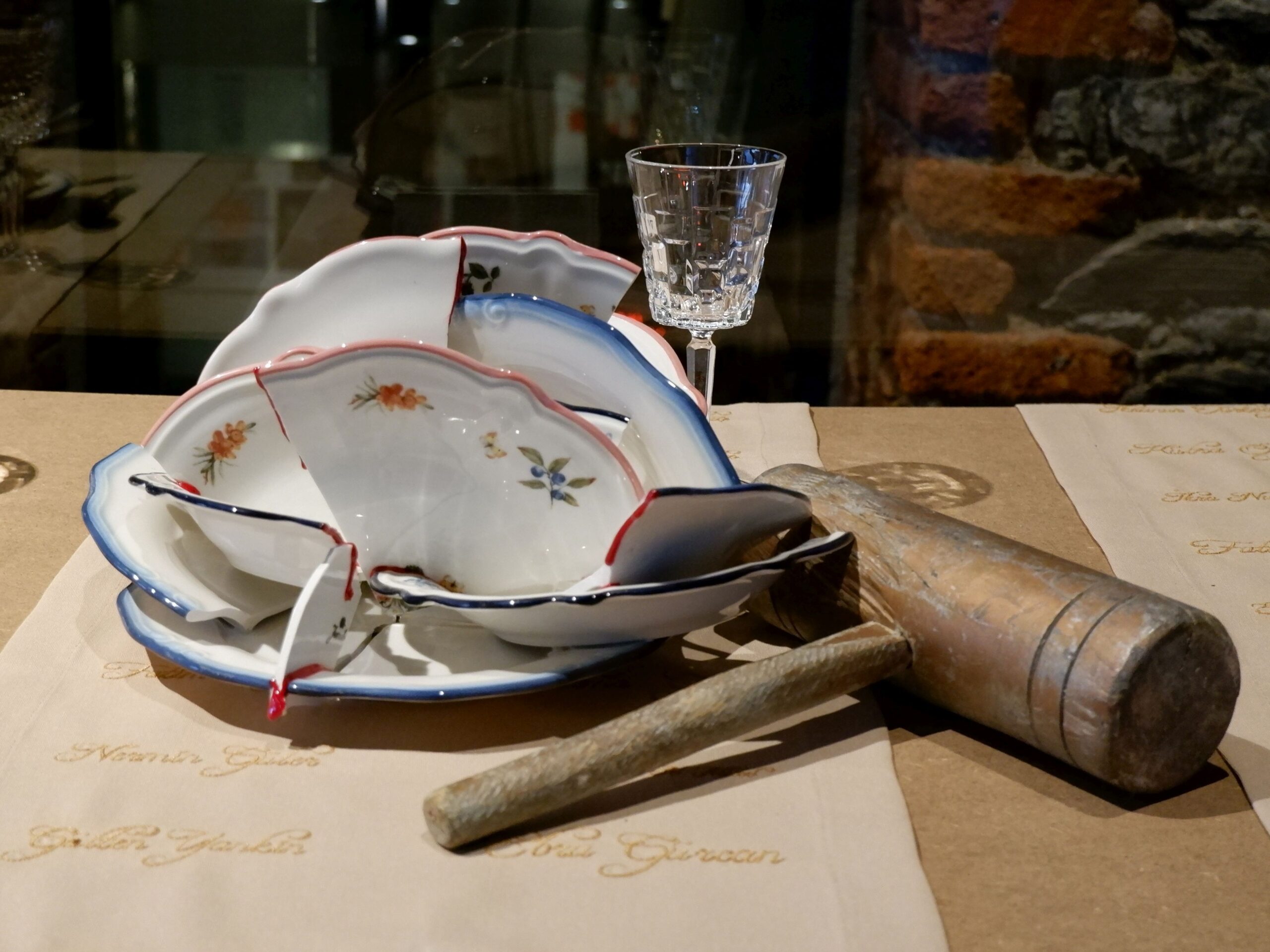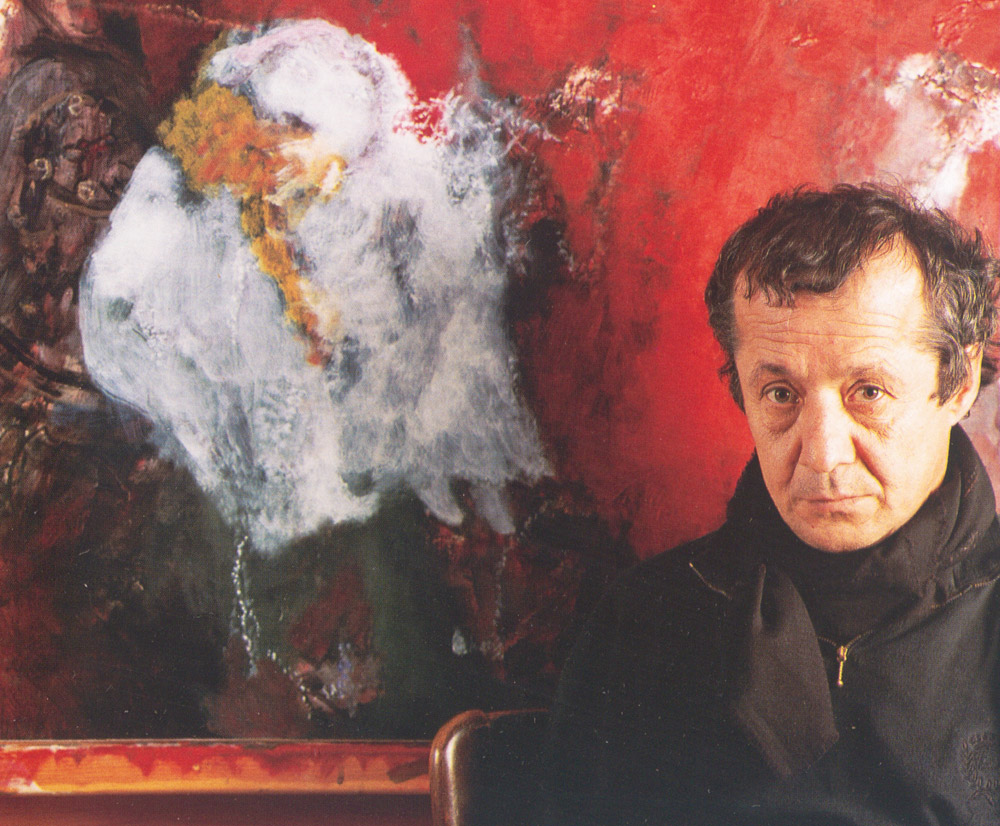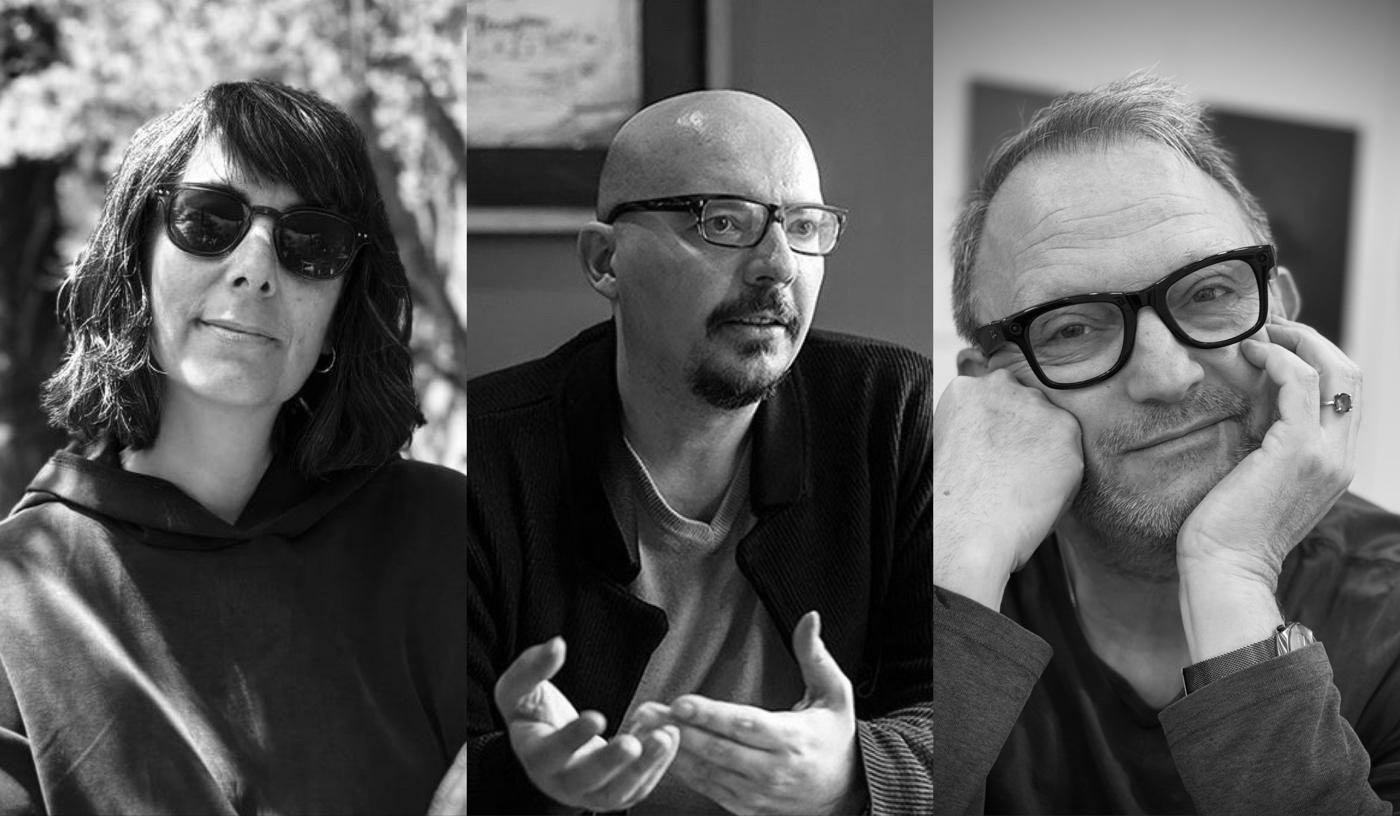The exhibition Sleeping Beauty, featuring works by Aslı Aydemir and Melike Kılıç, uses the language of art to explore how women are shaped by societal roles—and how they can break free from those molds. Opening on April 29 at Gama Gallery, we spoke with the artists about the show.
In Sleeping Beauty, Aydemir and Kılıç depict the fragile image imposed on women under societal pressure, using the expressive qualities of ceramic and paper. At the same time, they reveal the hidden strength beneath that fragile image through the very same materials. The exhibition will be on view at Gama Gallery from April 29 to May 23. We interviewed the artists about the conceptual foundation of the exhibition and their artistic practices.
How do you see the relationship between porcelain’s fragility and elegance, and the societal pressure and resilience of women?
Aslı Aydemir: Porcelain is known for its elegance and fragility, but its true strength lies in the sharp edges it forms when broken. The more it breaks, the sharper and more resilient it becomes. In this way, it deeply reflects the meaning of being a woman in this geography. To be a woman in Turkey requires a resistance woven with grace—standing strong without breaking, and if necessary, reshaping oneself through the act of breaking. A woman does not merely submit to imposed roles; she opens new paths for herself after each pressure, transforming and becoming a subject in her own right. Like broken porcelain that sharpens through struggle, a woman too becomes sharper—not to fall apart, but to be reborn.
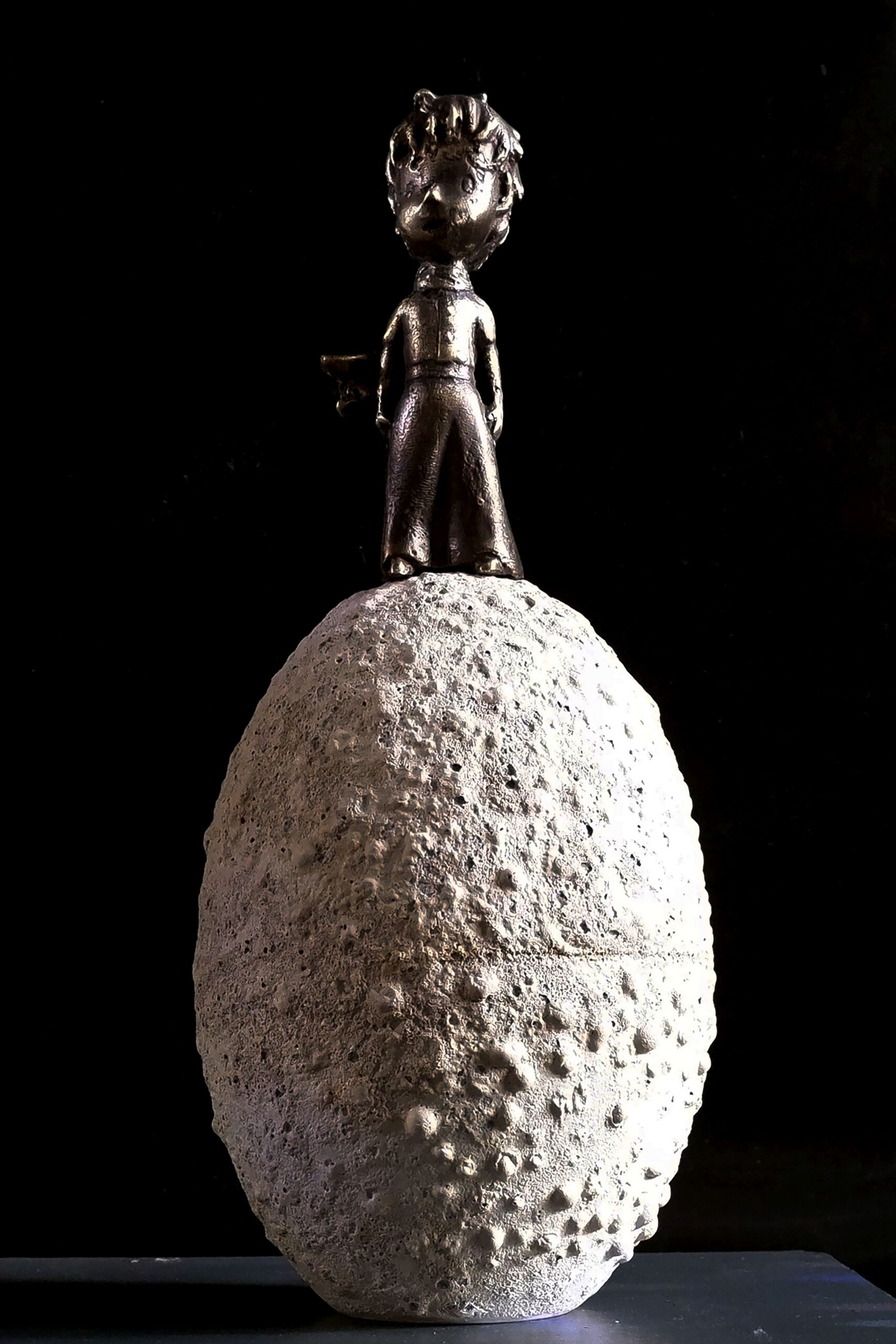
How does the exhibition’s theme of “awakening” relate to women’s societal roles? How do you express this awakening through art?
A.A.: This exhibition, titled Sleeping Beauty, centers on a fairytale-like silence and critiques the roles imposed on women as “beautiful,” “compliant,” and “waiting.” The awakening represents a rupture from that silence—when women shift from passive figures to self-aware subjects. For centuries, women have been reduced to their appearance, glorified for their passivity, and condemned to a life of waiting. The fairytale’s “sleeping beauty” was a metaphor for a woman dependent on a savior, immobile, and powerless over her own destiny.
“Women Are No Longer Awakening to Be ‘Beautiful,’ But to Be.”
In contrast, the motif of awakening in the exhibition symbolizes the end of passive waiting. It represents a reclaiming of one’s body, identity, and life. This awakening is not just an awareness—it’s a rupture, a rebellion, a transformation. Women are no longer awakening to be “beautiful,” but to be. And in art, this awakening takes form in cracked surfaces, deformed structures, self-recreating figures, and images that reclaim their voice.
In this way, art becomes a space where women express their suppressed identities. Sleeping Beauty signals not just the end of a fairytale, but the end of the archetypes it taught us. Every artwork represents a woman awakening to her truth, her voice, and her being.
Aslı, can you talk about the role of randomness in your work and how it connects to societal processes?
A.A.: Working with ceramics is not just a technical process—it also means listening to the material’s own nature and moving with it.
“Sometimes the Smallest Crack or Most Random Deformation Reveals the Soul of the Piece.”
The randomness inherent in the material makes the shaping process unpredictable, teaching me patience, surrender, and acceptance. Sometimes the smallest crack or the most accidental distortion brings out the true soul of the work. It reminds me that there is no single path in the struggle of life—that the path shapes over time, and even the goal is not static, but alive.
This is also how I relate to social processes—through the randomness of the material. Just as forms inside a kiln are shaped by heat and time, individuals—especially women—are shaped by pressures, resistance, and unexpected ruptures. In my work, randomness is not just an aesthetic device, but a reflection of social fractures, personal evolutions, and resilience. Each piece walks the path with me—sometimes going out of control, but ultimately arriving at its own truth.
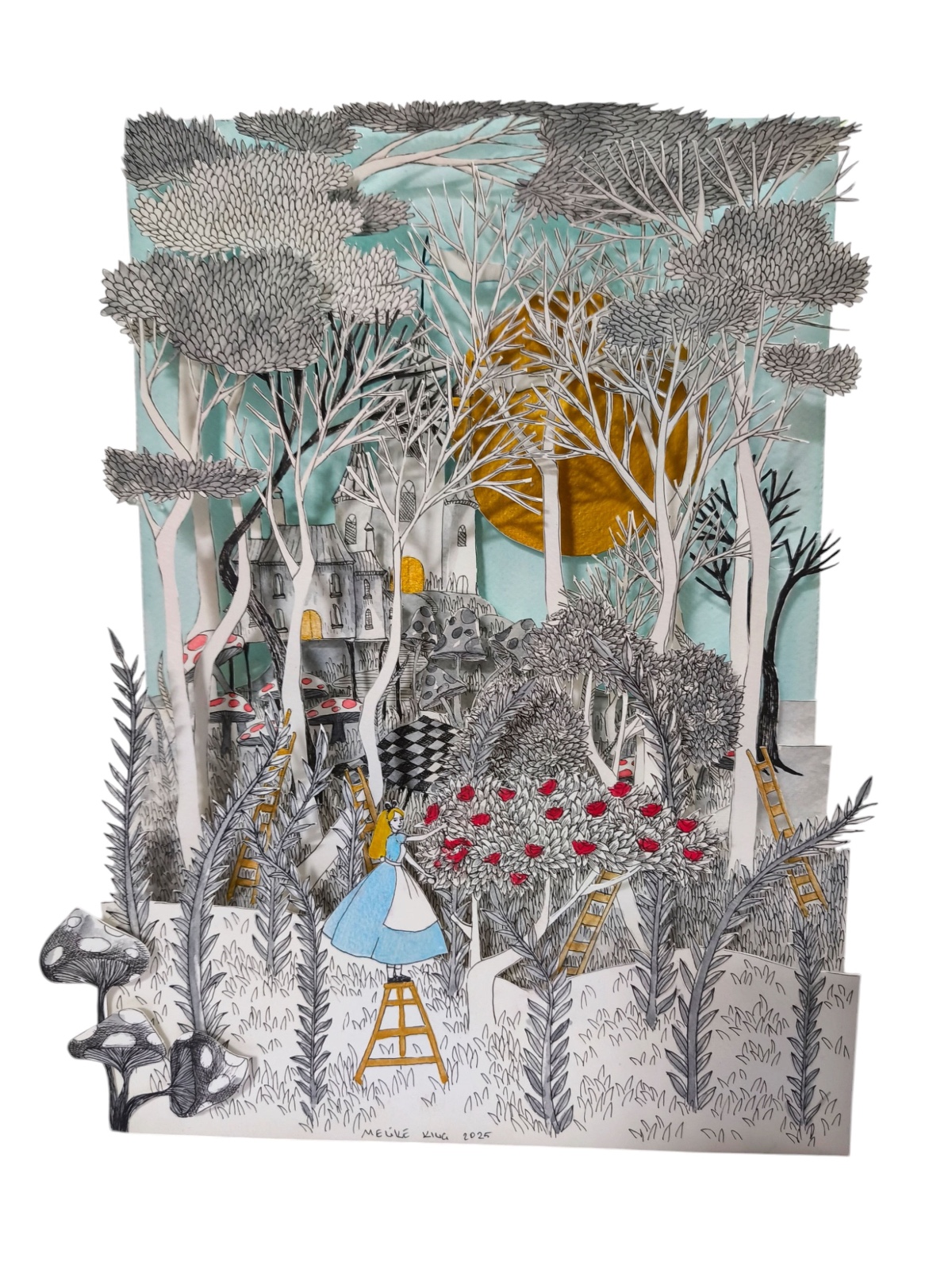
So when I shape clay, I’m not only touching the earth, but also transformation, life, and the unaccepted. In this sense, randomness is not a flaw—it is the process itself. Just like life. Just like me.
Melike, in your work, the boundary between sleep and wakefulness, between reality and fiction, seems to blur. What does this fluidity add to your pieces?
Melike Kılıç: For me, sleep and wakefulness, reality and fiction, were never sharply divided. Moving between these opposites brings both lightness and depth to my work. I love when the viewer encounters a feeling that is familiar but not fully graspable. I believe art begins beyond rigid boundaries, which is why I always try to maintain that fluidity between consciousness and dream in my work.
Your works often include themes of ecological destruction and dystopian futures. What kind of social responsibility do these themes reflect? What message does your art convey in this regard?
M.K.: Including themes of ecological destruction and dystopia in my art is a reflection of the responsibility I feel toward the world.
“I Believe Art Has a Duty to Show Truth as Much as It Shows Beauty.”
I perceive nature and life through a romantic lens, and the destruction we witness deeply affects me. Through my work, I not only express my emotions—I also want the viewer to reflect and remember. I believe art has a duty to show truth as much as beauty.
Rather than capturing a single moment, your works seem to animate a narrative. Why do you choose this storytelling style?
M.K.: My preference for animating a storyline rather than freezing a single moment comes from my admiration for cinema and photography. I want the viewer to feel the movement, the time, and the emotion within a scene. It’s important to me that the audience senses not just the moment itself, but the whole story—before and after. I believe art can create not just static images, but living narratives.
Both ceramic and paper are known for their fragility. Yet they are surprisingly dynamic and unpredictable. In this sense, what do they say about the position of women and their ability to survive in society?
M.K.: Women have long been portrayed as fragile beings who must be protected by men—just like ceramic and paper. But these materials, despite their delicacy, have carried some of the most significant traces of human history.
“Like Paper and Ceramics, Women Appear Fragile but Are Powerful Witnesses of Memory and Resistance.”
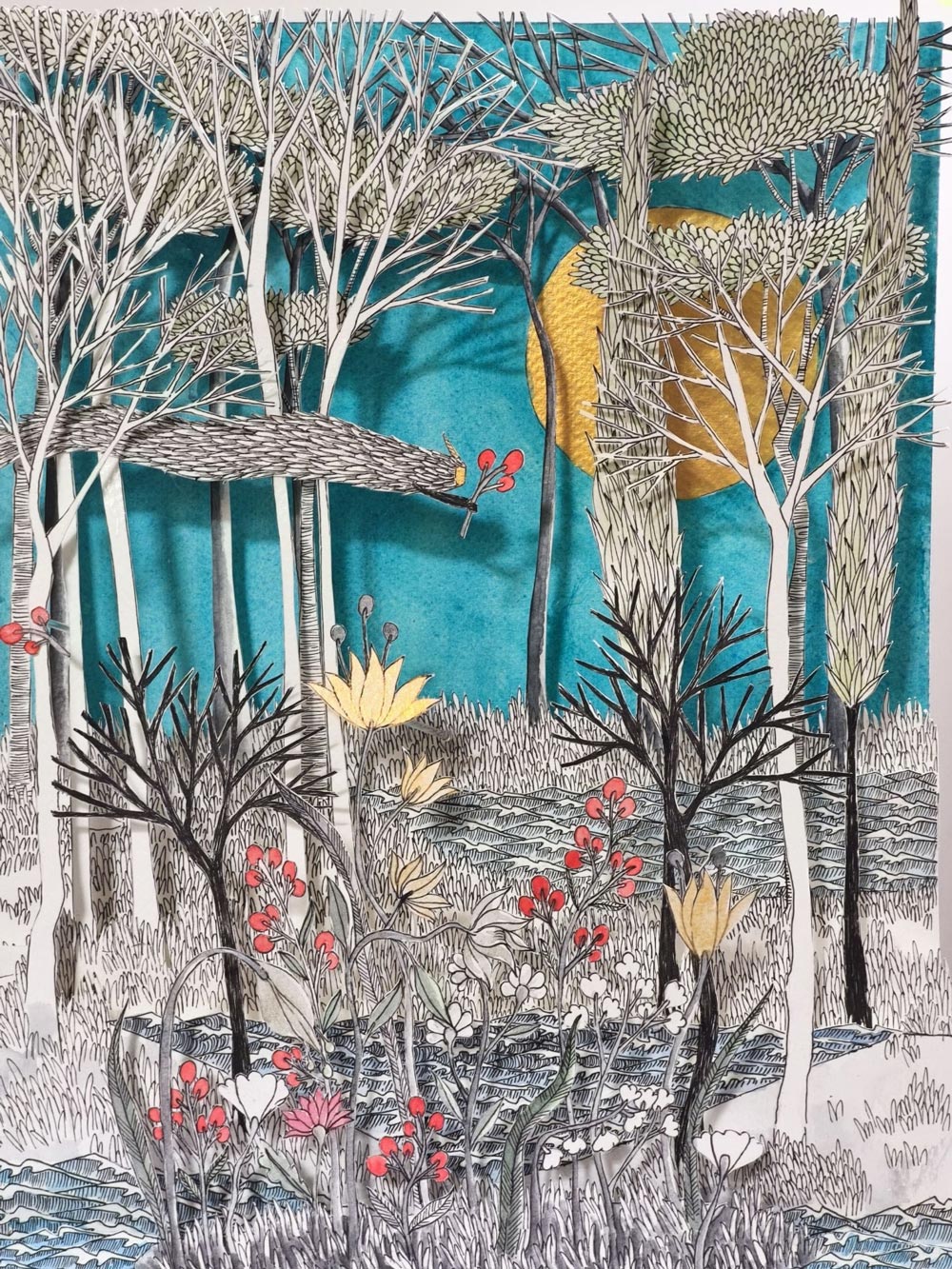
Similarly, women may seem fragile on the surface, but in truth, they are symbols of resilience and continuity. Paper and ceramic can be easily destroyed from the outside, yet they are strong vessels of memory and legacy—just like healers, storytellers, and midwives throughout history.
A.A.: Both ceramic and paper seem fragile, just like women, but they hold an unpredictable resilience and a continuously evolving potential. Today, not only in our region but globally, the identity of women is being reshaped again and again. With the influence of social media, there’s a growing conflict between women who embrace empowerment and individuality, and those who internalize traditional roles. Working with these fragile yet transformative materials is like tracing this tension and rebirth.
What do you think will happen when Sleeping Beauty awakens?
M.K.: I believe that when Sleeping Beauty awakens, she will write her own story. Instead of waking into a world created by others, she will chart her own path. And she won’t wait for a kiss to wake up.
This exhibition gave me a chance to share the hidden layers of my work, and it was truly meaningful to feel the support of Gama Gallery, which hosts both Turkish and internationally acclaimed artists.
A.A.: When Sleeping Beauty awakens, she will remember her ancient, forgotten power: her fertility, her creative force, her bodily wisdom, and her rooted connection to the earth. The layered, feminine power that existed before monotheistic order will rise again—not just to awaken, but to reclaim its place.
Sleeping Beauty runs from April 29 to May 23 at Gama Gallery.

